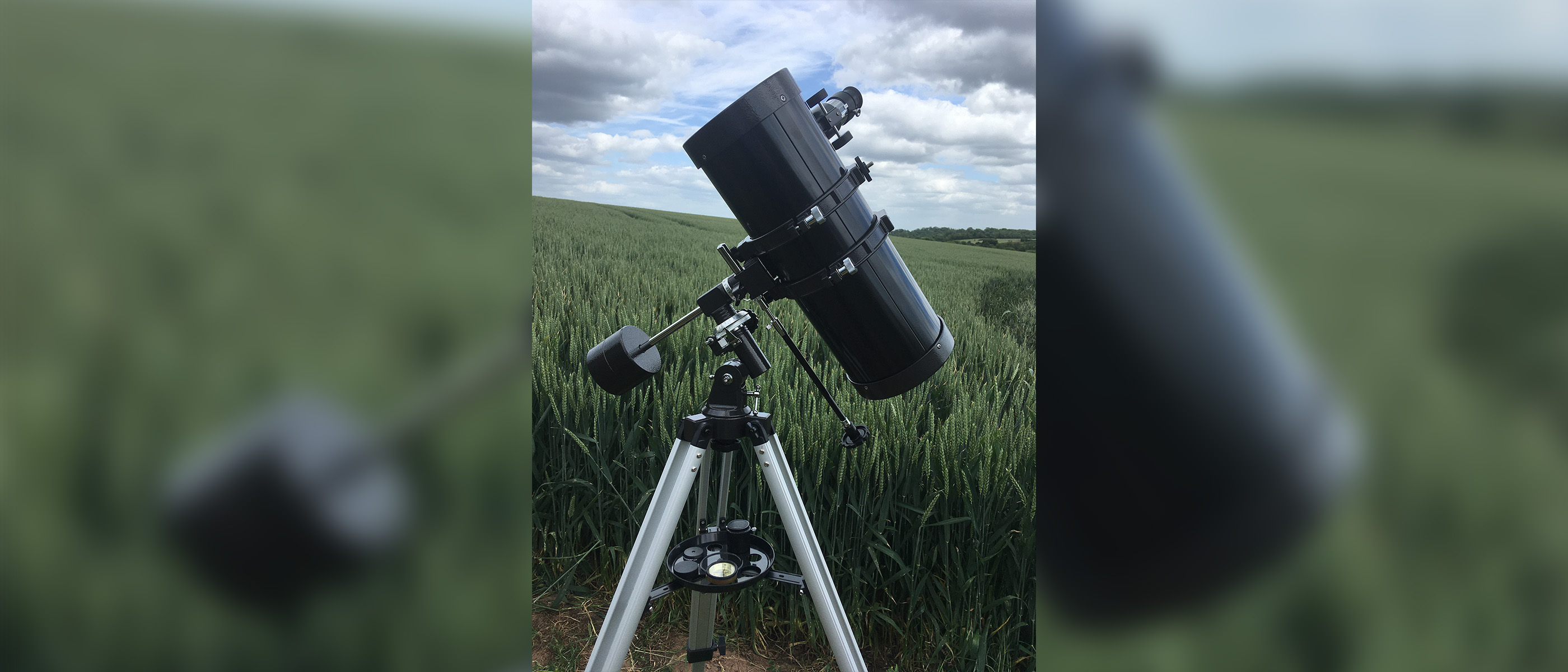Space Verdict
A solid mount and 127mm of light collecting power should make this no-frills telescope a useful astronomy tool, but cheap components let it down.
Pros
- +
German equatorial mount
- +
Solid tripod
- +
Good light gathering power
Cons
- -
Complex optics
- -
Poor eyepieces
- -
Cheap plastics
Why you can trust Space.com
The five-inch diameter reflector is frequently considered an ideal choice of astronomical telescope for the serious beginner, occupying a sweet spot of good light-gathering power with reasonable economy. The Celestron Powerseeker 127EQ is aimed firmly at this market and is the biggest and most powerful scope in the Powerseeker range.
It comes complete with a German equatorial mount, to facilitate easy tracking of objects across the night sky when properly set up and aligned, and a decent aluminum tripod that provides a steady base.
The standard kit includes a 20mm erecting eyepiece, a 4mm high-power eyepiece, and a 3x Barlow lens.
Optical design: Newtonian
Aperture: 127mm
Focal length: 39-inches/1000 mm
Lowest useful magnification: 20x
Highest useful magnification: 250x
Total kit weight: 22lbs/10 kg
Mount type: German equatorial
On the face of it, this is an attractive package at an attractive price from a trusted astronomy brand, offering everything you might need to start making some worthwhile nighttime observations of the stars, planets and nebulae. That's why it features in our guide to the best budget telescopes for under $500.
However, our tests revealed that this instrument does have some shortcomings that you should consider before purchasing. Specifically, the optical quality of the primary mirror, its correcting elements, and the supplied eyepieces and Barlow lens. The finder scope while of good quality is unfortunately poorly located, the accessory tray isn't as robust as it could be, and the set-up instructions omit any reference to the vital task of polar alignment.
There are some good components here though and the whole package offers a useful starting point.
Celestron Powerseeker 127EQ: Design
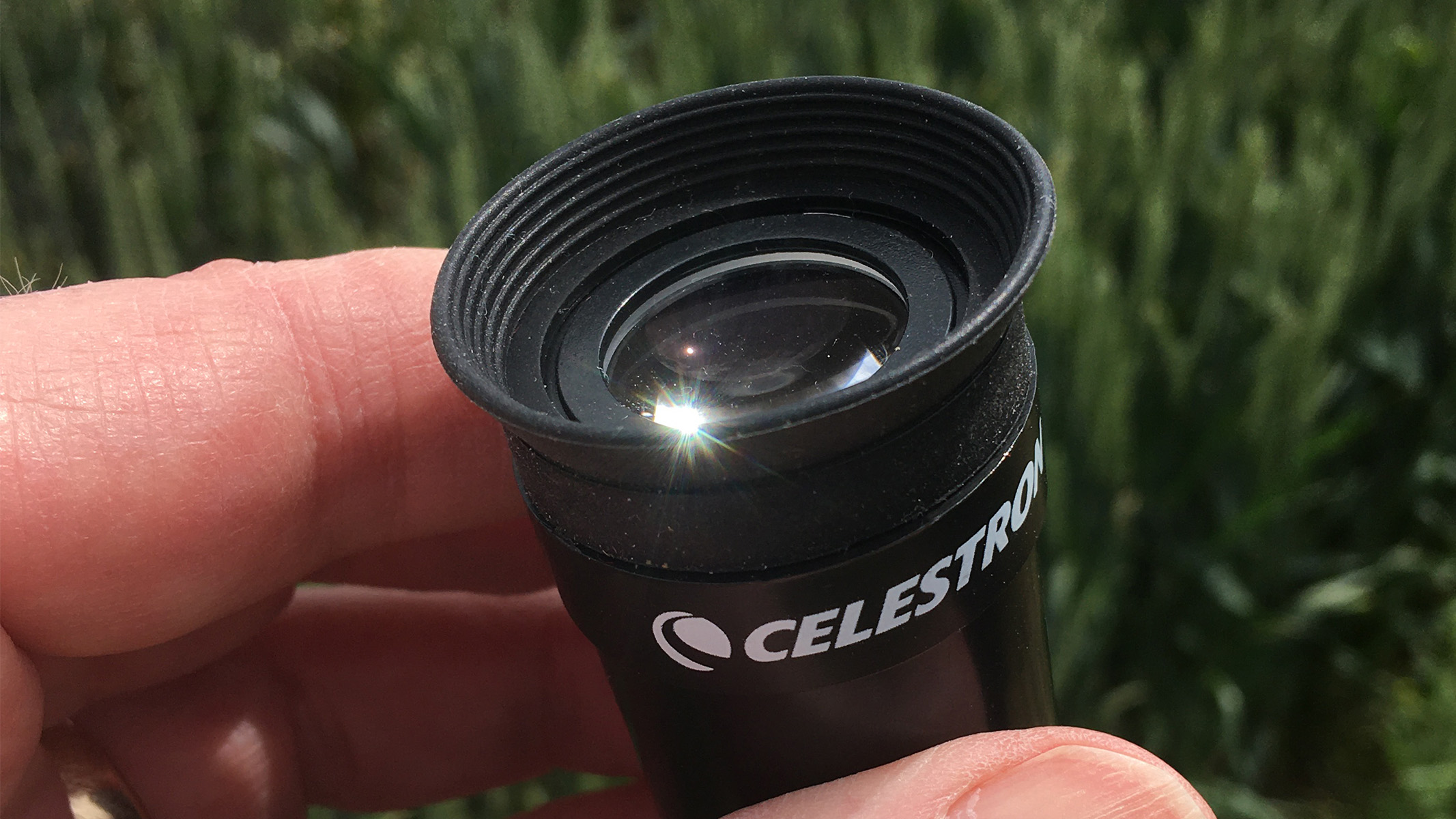
- Bird-Jones Newtonian gives longer focal length at the expense of optical quality
- Well-engineered equatorial mount
- Assembles in under an hour
A conventional Newtonian reflector telescope has a parabolic primary mirror that collects light and directs it to the flat secondary mirror, which is reflected 90 degrees into the eyepiece. The design of the Celestron Powerseeker 127EQ is subtly different. Instead of a parabolic primary, it uses a cheaper spherical mirror with additional optical elements to correct the resulting distortions. The extra components are installed downstream of the secondary mirror inside the focus tube, and also serve to increase the telescope's focal length. This is how Celestron squeezes 1000mm of focal length into a tube just 440mm long.
This Bird-Jones arrangement isn't necessarily a bad thing. It results in a more compact and economical telescope, meaning the consumer gets a better handling instrument with more light-collecting power for their money.
But with any optical compromise, there will be a trade-off. Every additional optical element steals some of those precious photons collected by the mirror, giving a slightly dimmer and less sharp image. Celestron takes some steps to minimize this effect, using fully coated optics, although they're not multi-coated.
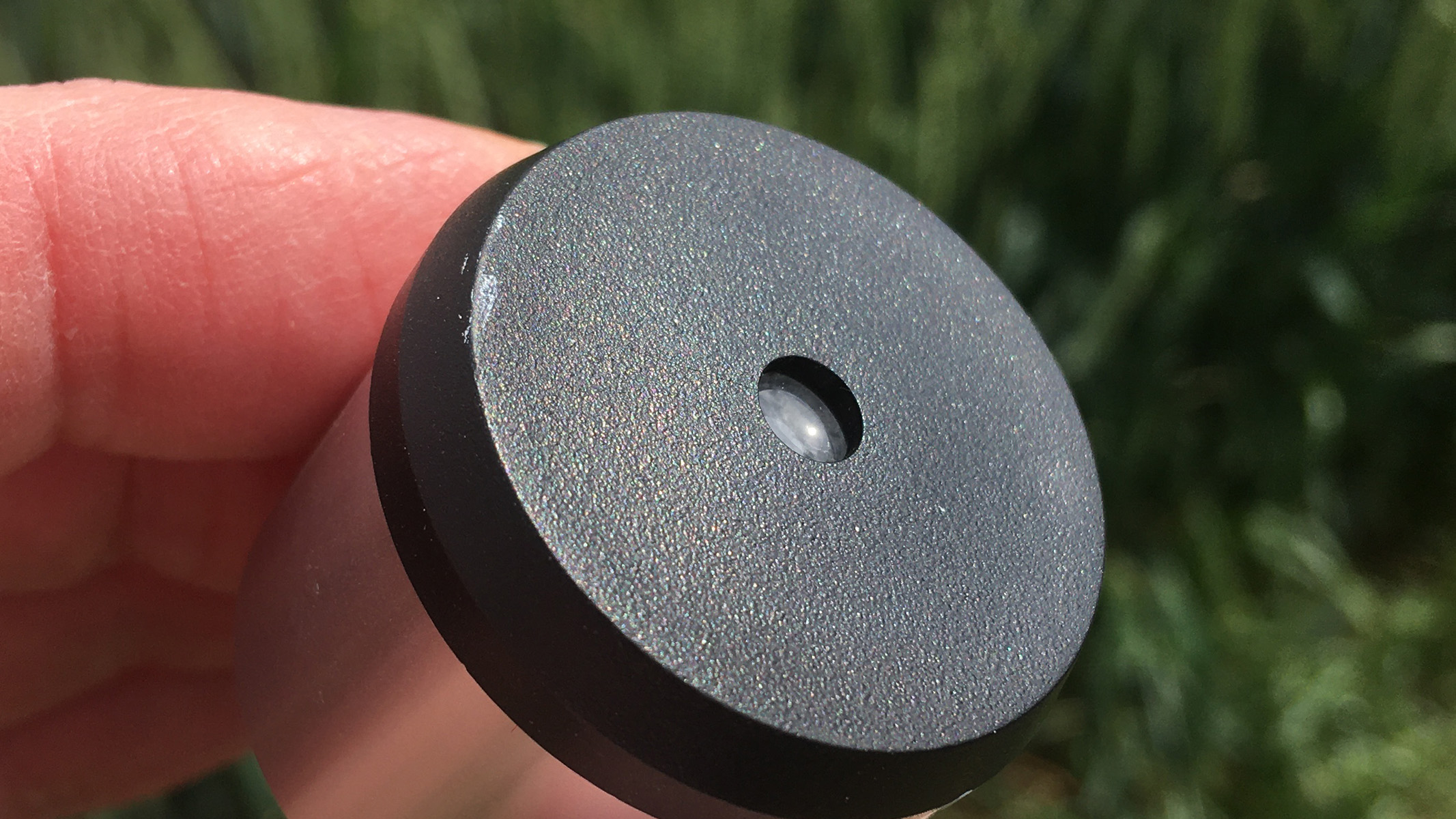
The telescope comes as standard with a 20mm erecting eyepiece and a 4mm high-power eyepiece, plus a 3x Barlow lens. The 20mm lens provides 50x magnification, or 150x used with the Barlow, while the 4mm gives 250x and (in theory) a whopping 750x with the Barlow.
However, the maximum usable magnification of any telescope is limited, and the usual rule of thumb is 50x per inch of aperture (or 2x per mm), under ideal conditions. That 4mm lens is pushing the boundaries of what any five-inch telescope can deliver, let alone one with a spherical primary and additional correctors.
The Powerseeker comes as standard with a well-engineered German equatorial mount which is just about capable of supporting the tube. The included aluminum tripod provides a steady base and is mercifully light.
Celestron Powerseeker 127EQ: Performance
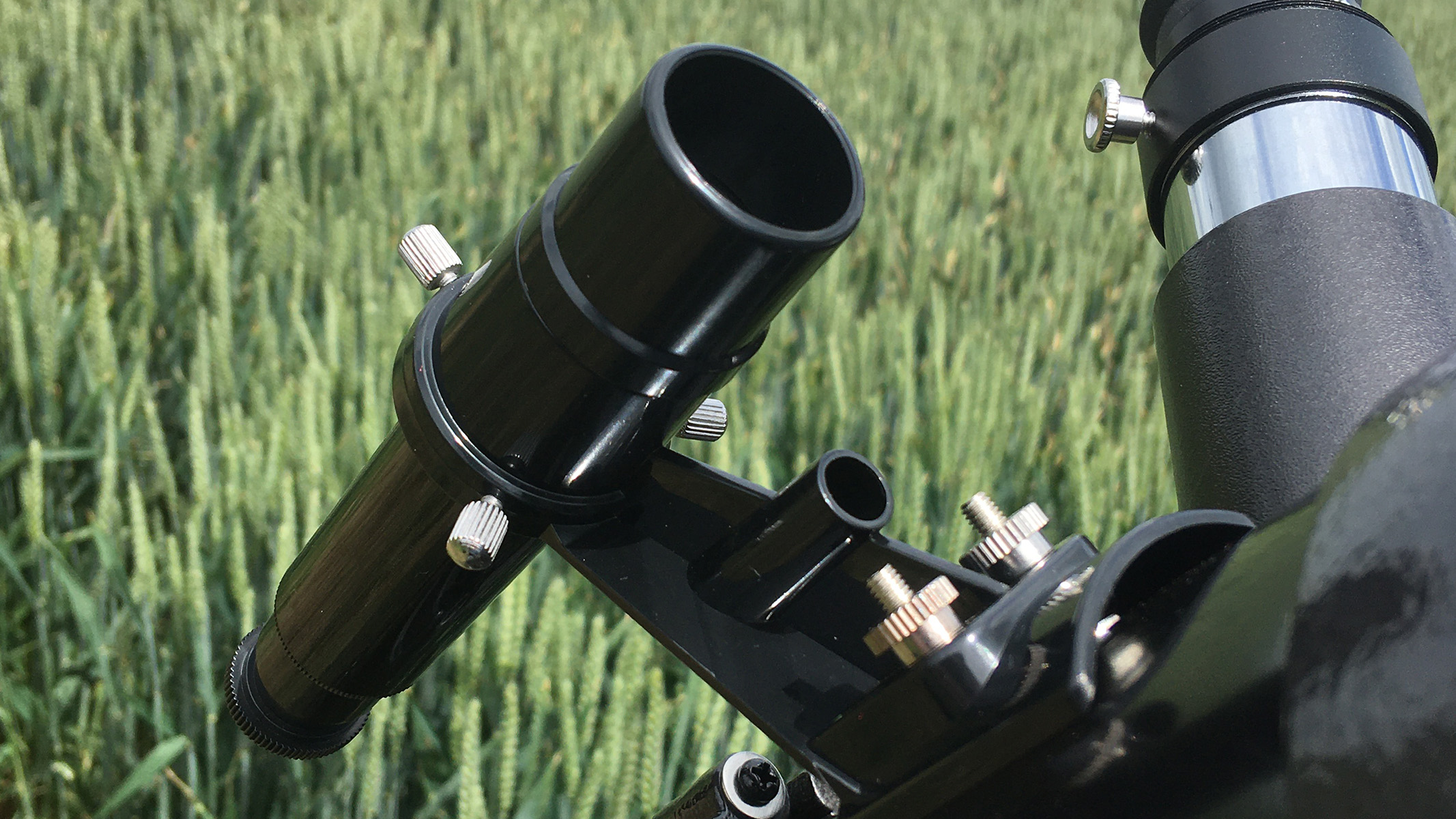
- Good finderscope is lightweight
- Colors somewhat muted through the glass
- 4mm eyepiece is not entirely practical
The telescope comes in a substantial box weighing about 28lb (12.5kg), and requires a bit of assembly. The assembly proved straightforward, although you should take care to unfold the equatorial mount before attaching the tube and 7.5lb counterweight.
The finderscope is a lightweight plastic affair unit that works surprisingly well, considering its small size. It is mounted relatively close to the tube though, which can be a little awkward when sighting through it.
First light on our scope was on a distant telegraph pole, about three-quarters of a mile away, to align the finder. Using the 20mm erecting eyepiece an impressive amount of detail could be seen on the target — even clearly identifying the species of pigeon that landed on the pole by its distinctive white collar.
Celestron's assembly instruction leaflet does not mention the importance of aligning the mount with the celestial pole, and this vital detail is only found buried on page 17 of the telescope manual supplied on the CD. There are two aspects to this: setting the correct latitude for the observing location and aligning the mount on a true north-south axis with a level base.
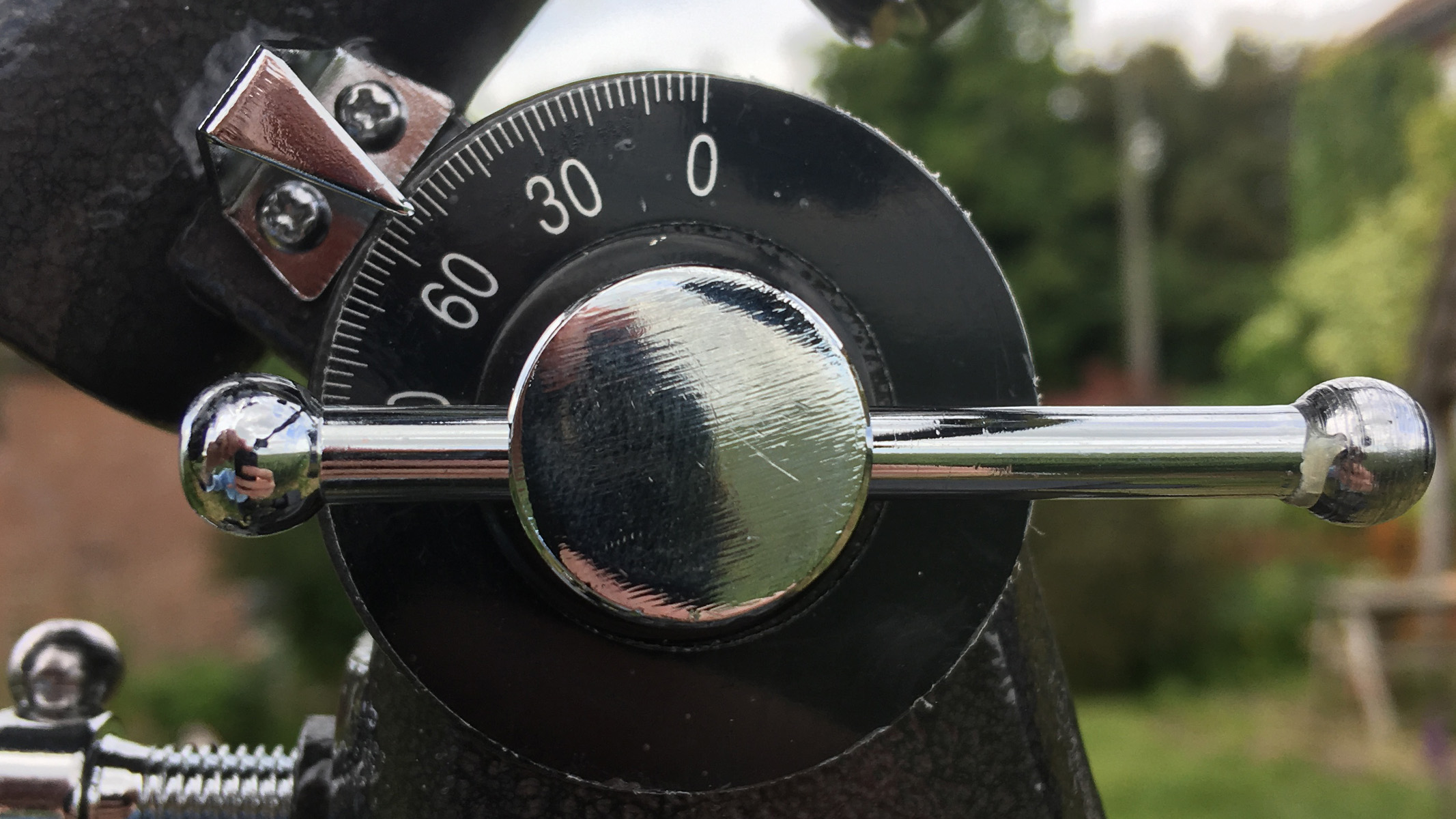
The latitude scale on the Powerseeker 127EQ covers a full 90-degree quadrant, meaning that you can set the correct latitude for any location on Earth. Some telescopes, including others in Celestron's range, only cover a smaller arc from 20 to 60 degrees latitude, which is fine unless you happen to be in Alaska, Sweden, or the tropics.
Finding true polar alignment proved straightforward using a spirit level and magnetic compass. Our observing site happens to be close to an agonic, a line of zero magnetic variation, so aligning to magnetic north was accurate enough. Smartphone apps are available for both level and compass, although there are advantages to using old technology here as it helps preserve night vision.
Celestron Powerseeker 127EQ: Functionality
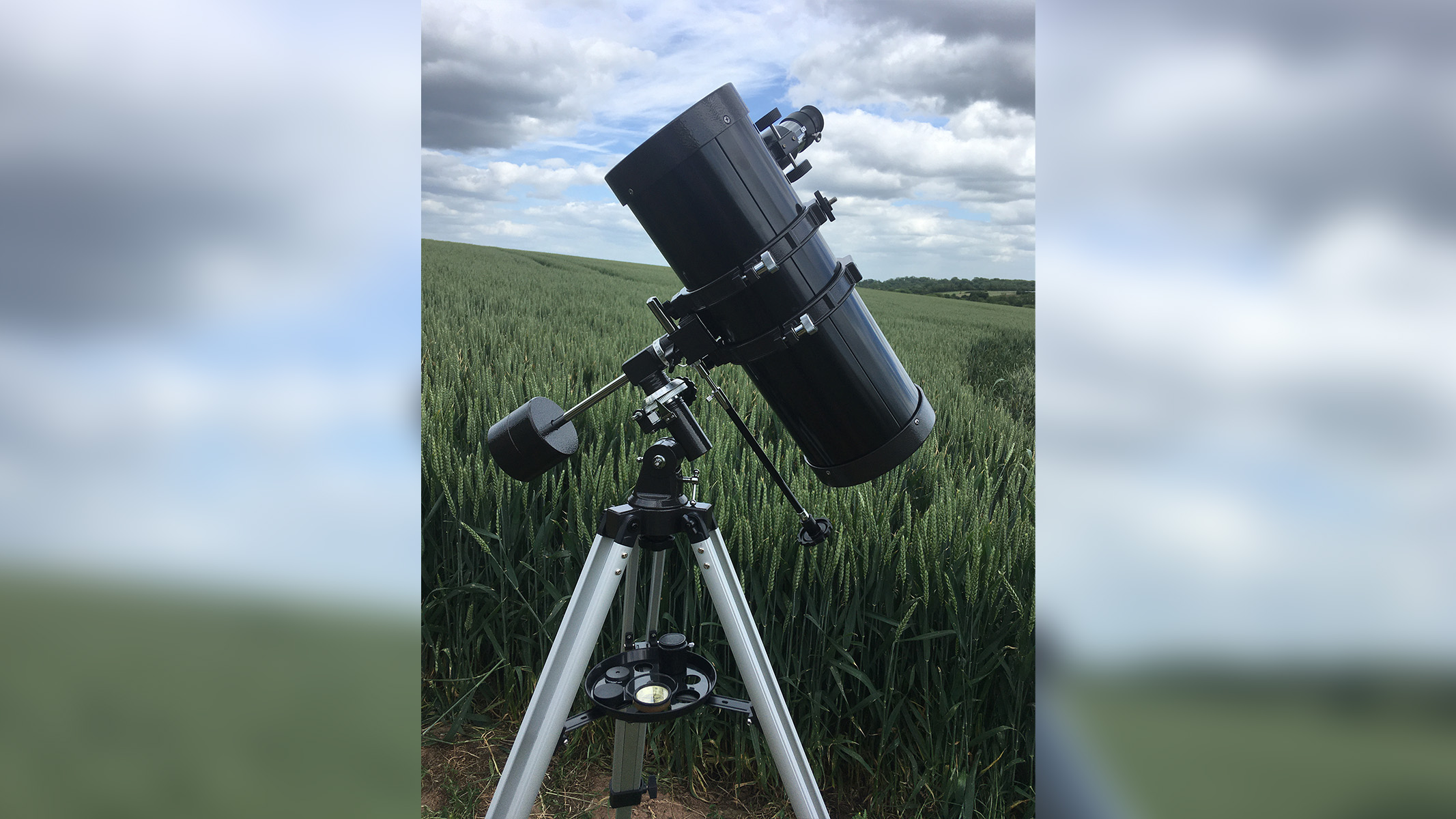
- Can be used for terrestrial viewing
- 20mm erecting eyepiece gives sharp views
- Software feels a little dated
Astronomical observations proved disappointing. The standard 20mm erecting eyepiece delivered clear sharp views of the moon with excellent shadow definition along the terminator. Swapping to the high-power 4mm eyepiece gave a very soft image in shades of gray, rather than black and white, which proved impossible to get into sharp focus. Even a good quality 4mm lens would be at, or a little beyond, the maximum useful magnification for a telescope of this size. This particular lens did not perform well.
Things were a little better using the 20mm with the Barlow lens. This provides 150x magnification and gave lunar images that were better than the 4mm, but still of lower quality than might be expected. A Barlow lens inevitably provides a dimmer image in exchange for its magnification boost.
Turning to the stars, the 20mm easily split the well-known double star in Ursa Major, Alcor and Mizar, showing other stars in the field reasonably well. Color rendition was just OK, with Antares glowing orangey-red and Arcturus attempting to impersonate Mars. In both cases, the colors were rather more distinct in binoculars. Again, the 4mm eyepiece proved of little use and delivered only a faint smudge of color.
Our hunt for nebulae was frustrated by imperfect seeing conditions, although with patience, the luminosity of M31, the Andromeda nebula, was detected with the 20mm.
It seems a curious decision by Celestron to include these particular eyepieces in the standard kit. The 20mm is an erecting eyepiece, showing an upright image rather than the usual inverted view in astronomical telescopes. This notionally enables the Powerseeker 127EQ to be used for terrestrial viewing, but at the expense of astronomy. Erecting eyepieces create right-side-up images by introducing additional lenses or prisms, and each new optical surface inevitably degrades the final appearance.
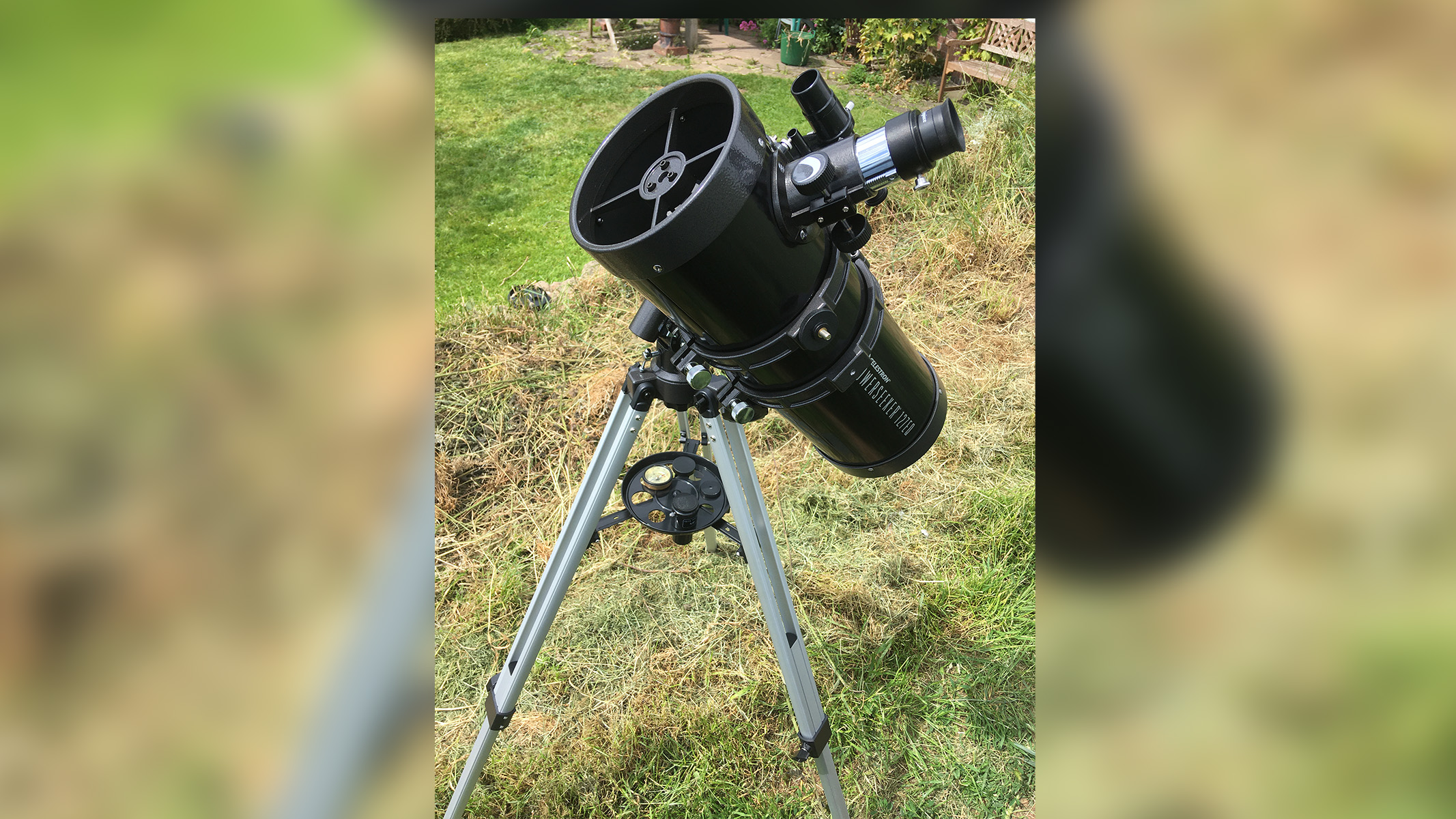
With the additional correcting elements in the tube to compensate for the spherical mirror, and additional components in the eyepiece to erect the image, it is little wonder that performance is lower than expected. Add the Barlow lens, with yet more optical surfaces, and the picture worsens.
Any decent telescope requires both quality optics and a steady mount, and at least here the Celestron performed reasonably. The tripod proved stable, although the flimsy plastic accessory tray was not impressive. Once aligned, the equatorial mount supported the telescope adequately and the slow-motion controls proved smooth and glitch-free. All but the most delicate of adjustments resulted in a minor wobble of the scope, which dampened in under a second.
Our collimation check showed that the instrument appeared to be within tolerances as delivered, but a complete adjustment requires a special laser sighting tool which we didn't have, so we did not attempt this.
The instrument comes with software, the basic edition of Starry Night. This feels rather dated now, and installation is only available on PC and Mac computers — not smartphones. That's a bit of an oversight when so many powerful apps are available in your pocket.
The Celestron Powerseeker 127EQ will take any standard 1.25-inch eyepiece. If we were given this telescope to keep, we would ditch both standard lenses and invest in 15mm and 9mm Plossl eyepieces. We'd also drop the 3x Barlow for a less ambitious but more useful 2x. This set-up would provide 67, 111, 133, and 222x magnifications, making the most of the 127mm primary mirror.
Celestron's single-axis motor drive unit will keep your telescope on target, automatically compensating for the turning of the Earth, reducing the time spent re-centering and waiting for the vibrations to dampen. This means more time doing astronomy.
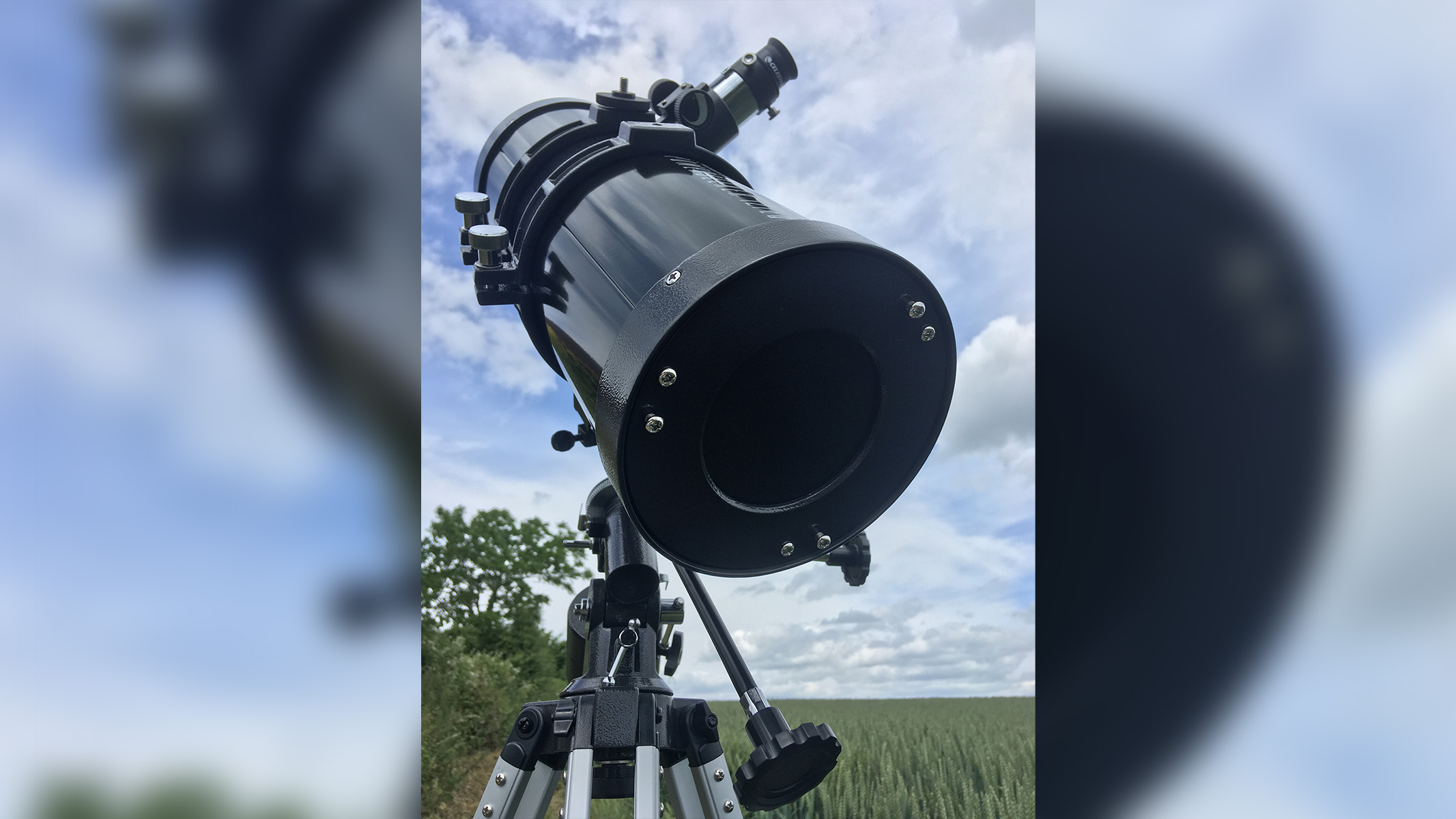
Should you buy the Celestron Powerseeker 127EQ?
This telescope is let down by the design compromises in its primary mirror, and a poor selection of standard eyepieces. It does offer a useful 5-inch diameter which, even with the need for correcting optics, should be able to give fantastic views of the heavens for the serious beginner. The tripod and mount are up to the job, but to make the most of this telescope additional eyepieces are needed to make the most of its potential.
If the Celestron Powerseeker 127EQ isn't for you
If the Celestron Powerseeker 127EQ isn't for you, an alternative would be the Orion SpaceProbe 130ST. Superficially similar to the Celestron, the Orion also has a 5-inch aperture but a shorter 650mm focal length and a better selection of standard eyepiece lenses.
Alternatively, there is the Celestron Powerseeker 80AZ. This refractor telescope has an 80mm objective lens and the simplicity of an alt-az mount. Just point at the heavens and enjoy the views. A good choice for observing the moon and planets.
Finally, take a look at the Sky-Watcher Skyliner 200P. While more expensive, it will allow you to pick out faint galaxies easily thanks to its larger aperture but bear in mind this telescope requires frequent collimation so isn't quite as grab-and-go as the Celestron Powerseeker 127EQ.
Take a look at our best beginner telescopes buying guide for more inspiration.
Join our Space Forums to keep talking space on the latest missions, night sky and more! And if you have a news tip, correction or comment, let us know at: community@space.com.
Russ Swan is a UK-based freelance science writer and author with a love of all things related to space and aviation. He built his own 100mm refractor telescope from some bits found in a military surplus store, and once had lunch with Neil Armstrong. His popular science book The Physics Behind… explains not just how the universe works, but why. He tweets (occasionally)!
